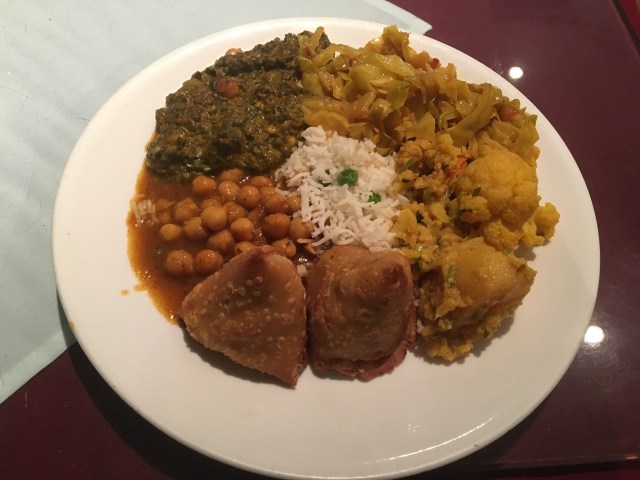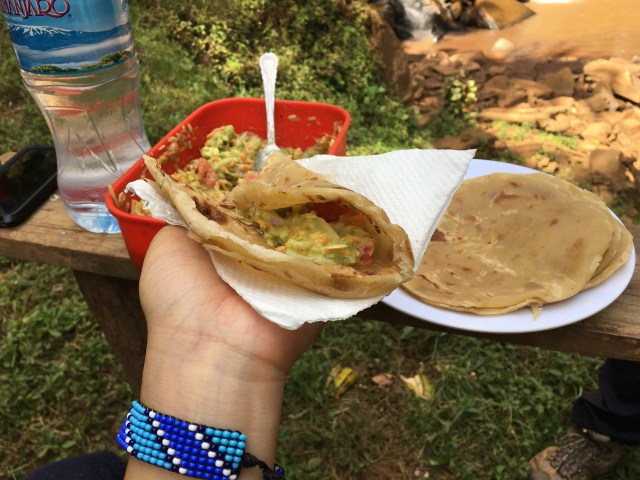When it comes to vegan travel, no two countries are alike. In some destinations, vegan/vegetarian is part of the traditional cuisine, while in other places, the idea is so foreign that most locals kept asking what I could eat, and puzzled by the reason behind it (In Cuba and Ecuador people just went speechless upon hearing “soy vegana”). Since I became a vegan last August, I’ve traveled a bit here and there, and I’ve found authentic vegan dishes that were native to the region and not just vegan reinventions (tempeh and kimchi tacos? Ugh, no thank you). It has since became my quest to find and share vegan food in different cultures, so here’s the first in the series.
(You can also read this as “how to eat out as a vegan,” since I don’t know how to cook and eat out every single meal. This is my vegan version of eat-your-way-around-the-world.)
Ethiopian
Last December I missed my flight from Addis Ababa to Nairobi, so I stayed one night in Addis Ababa and had dinner and breakfast there. Having no prior knowledge of Ethiopian food, I was utterly surprised by the amazing vegan breakfast buffet at my hotel and learned that the Ethiopian Orthodox Church prescribes a number of fasting days (refrain from eating animal products), including Wednesdays, Fridays, so Ethiopian cuisine contains many dishes that are traditionally vegan. And even on Ethiopian Airline, besides the standard airline meal, you can ask for “fasting” food, and it’s fully vegan!

Indian
I call Indian food just “food,” because it is my go-to cuisine even when I was an omnivore.
A large percentage of the population of India is vegetarian for religious reasons so Indian food also has lots of dishes that are traditionally vegetarian or vegan. There are dozens, if not hundreds, of dishes in which vegetables and legumes are the main ingredients.

The thing to watch out for as vegans is dairy. Though the dishes normally don’t contain eggs, dairy is pretty common, so when ordering vegan Indian food in restaurants it’s a good idea to ask if it contains common dairy products such as curd (yogurt), paneer (cheese), and ghee (clarified butter).
There are many Indian veggie dishes that typically do not contain any dairy at all. A few examples are dishes based on chickpeas (Chana Masala), eggplant (Baingan Bhartha, my favorite), as well as lentils (Daal), cabbage, cauliflower (Aloo Gobi), peas, and potatoes.
Chinese
Many Chinese dishes are traditionally vegan, with ingredients such as eggplant, tomatoes, string beans, mushroom, wood ear, bitter melon, cauliflower, peppers and other vegetables. Chinese vegan dishes vary from province to province so I only know some of the most popular ones from the northeast, such as Di San Xian (地三鲜, potatoes, eggplant and peppers), spicy wood ear or cucumbers, roasted sweet potatoes and veggie stir fry (炒菜, shredded potatoes and other veggies), etc.
There’s also Buddhist cuisine (斋饭) with heavy Chinese influence. I didn’t know much about Buddhism since I was born and raised by atheist parents and we rarely go to temples. It’s only after becoming a vegan, I started to try out Buddhist cuisines in New York City and learn about them. I think a very distinctive feature of Buddhist cuisine is its creative use of soy products. There are mock meats of every kind made with textured soy protein and tofu, like this menu (http://www.buddha-bodai.com/menu.html) from Buddha Bodai in NYC.

However keep in mind that even though Chinese food rarely contains dairy or butter, eggs are commonly used in vegetarian dishes, and a lot of people do not know the difference between vegan and vegetarian. It’s always good to ask before ordering.
Mexican
Yes there are barbacoa, carne asada, machacado con huevo, and enchiladas verdes (all of them used to be my favorites), but Mexican staples such as corn tortillas, rice and beans (without lard), guacamole, and nopales are vegan. There are also popular dishes that can be made vegan, such as chilaquiles (without egg), elote (without cheese), chiles rellenos (instead of cheese, it’s stuffed with potatoes), tamales with beans or veggies. It’s also easy to have vegan tacos with nopales, mushrooms, avocados and beans.

Swahili
Discovering Swahili cuisine was one of the highlights of my trip to Tanzania.
The vegan food in East Africa is based on fresh and local ingredients that grow bountifully in the equatorial climate, so there are lots of local greens and tropical fruits. For breakfast or snack, there are mandazi and kitumbua (sometimes it’s mentioned in English in its plural form vitumbua), as well as pineapple, banana and passion fruit.


The staples, ugali (made with corn flour boiled in water), chapati (flatbread), mchicha (local green, tastes like spinach) and maharage (beans) are fully vegan. There are also many other veggie stews made with sweet potato leaves (matembele, I love it) or pumpkin leaves with tomato sauce. Other common veggies are cassava, avocado, tomatoes and bananas. And in Zanzibar, you can also have pilau (flavored rice) with veggies.

